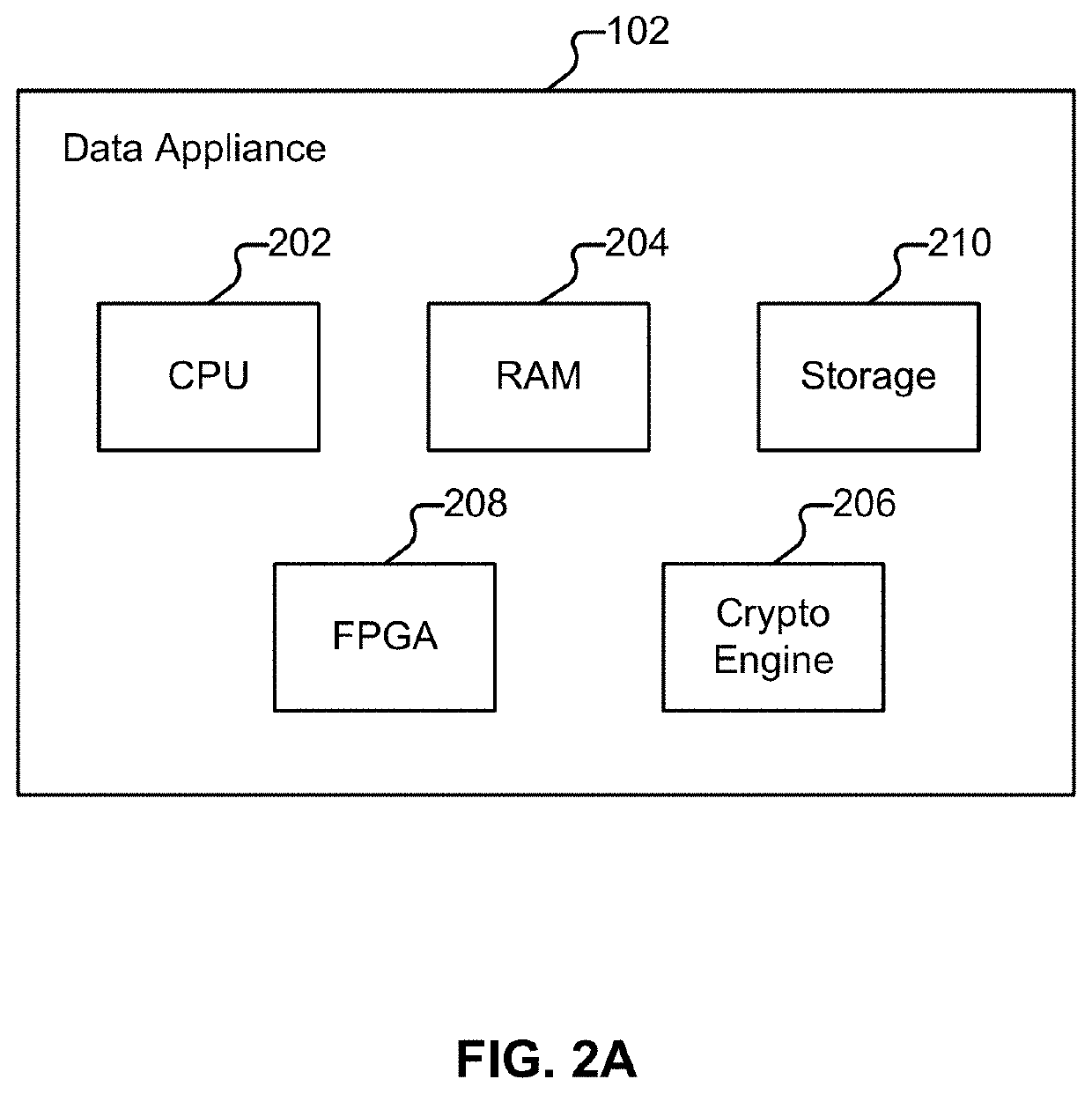Innocent until proven guilty (IUPG): adversary resistant and false positive resistant deep learning models
a deep learning model and adversary technology, applied in the field of innocent until proven guilty (iupg), can solve the problems of not finding similar work that utilizes off-target samples, not finding benign classifications by many classifiers, and not human interpretable prototypes and intuitive initializations
- Summary
- Abstract
- Description
- Claims
- Application Information
AI Technical Summary
Benefits of technology
Problems solved by technology
Method used
Image
Examples
example environment
[0037
[0038]FIG. 1 illustrates an example of an environment in which malicious applications (“malware”) are detected and prevented from causing harm. As will be described in more detail below, malware classifications (e.g., as made by security platform 122) can be variously shared and / or refined among various entities included in the environment shown in FIG. 1. And, using techniques described herein, devices, such as endpoint client devices 104-110, can be protected from such malware.
[0039]The term “application” is used throughout the Specification to collectively refer to programs, bundles of programs, manifests, packages, etc., irrespective of form / platform. An “application” (also referred to herein as a “sample”) can be a standalone file (e.g., a calculator application having the filename “calculator.apk” or “calculator.exe”) and can also be an independent component of another application (e.g., a mobile advertisement SDK or library embedded within the calculator app).
[0040]“Malw...
example security
[0052 Platform
[0053]Returning to FIG. 1, suppose a malicious individual (using system 120) has created malware 130. The malicious individual hopes that a client device, such as client device 104, will execute a copy of malware 130, compromising the client device, and, e.g., causing the client device to become a bot in a botnet. The compromised client device can then be instructed to perform tasks (e.g., cryptocurrency mining, or participating in denial of service attacks) and to report information to an external entity, such as command and control (C&C) server 150, as well as to receive instructions from C&C server 150, as applicable.
[0054]Suppose data appliance 102 has intercepted an email sent (e.g., by system 120) to a user, “Alice,” who operates client device 104. A copy of malware 130 has been attached by system 120 to the message. As an alternate, but similar scenario, data appliance 102 could intercept an attempted download by client device 104 of malware 130 (e.g., from a we...
example process embodiments
[0185 for Building Adversary and False Positive Resistant Deep Learning Models for Security Solutions
[0186]FIG. 15 is an example of a process for generating innocent until proven guilty (IUPG) models for malware classification in accordance with some embodiments. Specifically, an example process for generating an Innocent Until Proven Guilty (IUPG) model(s) for malware classification is depicted in FIG. 15. In various embodiments, process 15 is performed by security platform 122 (e.g., using model builder 152).
[0187]Process 1500 begins at 1502 when training data (e.g., the training data includes a set of files for the appropriate training context, such as JS files, HTML files, URLs, etc.) for training an Innocent Until Proven Guilty (IUPG) model for classifying malicious content and benign content based on a static analysis is received.
[0188]At 1504, extract a set of tokens from the set of input files to generate a character encoding and a token encoding. As described above, various...
PUM
 Login to View More
Login to View More Abstract
Description
Claims
Application Information
 Login to View More
Login to View More - R&D
- Intellectual Property
- Life Sciences
- Materials
- Tech Scout
- Unparalleled Data Quality
- Higher Quality Content
- 60% Fewer Hallucinations
Browse by: Latest US Patents, China's latest patents, Technical Efficacy Thesaurus, Application Domain, Technology Topic, Popular Technical Reports.
© 2025 PatSnap. All rights reserved.Legal|Privacy policy|Modern Slavery Act Transparency Statement|Sitemap|About US| Contact US: help@patsnap.com



